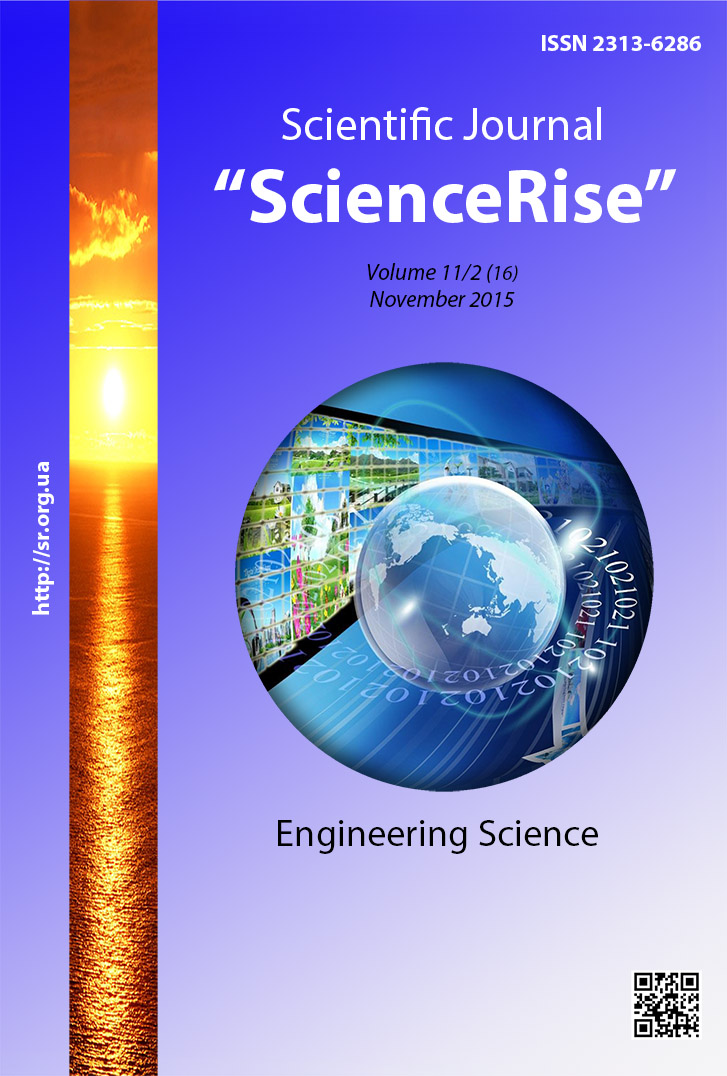Participation of oxygen and carbon in formation of oxidation-induced stacking faults in monocrystalline silicon
DOI:
https://doi.org/10.15587/2313-8416.2015.53451Keywords:
silicon, single crystal, oxygen, carbon, oxidation-induced stacking fault, fusion, heater, Chochralsky method, microdefectsAbstract
It is experimentally established, that density of oxidation-induced stacking faults (OISF) in the boron doped monocrystalline silicon plates, that above, than it is more relation of oxygen atoms concentration to carbon atoms concentration in them.
On research results of geometry of OISF rings in the different sections of single-crystal geometry of areas is reconstructed with their different closeness. At adjustment of the growing modes of single-crystals of silicon the increase of output of suitable product is observed
References
Rejvi, K.; Gorina, S. N. (Ed.) (1984). Defekty i primesi v poluprovodnikovom kremnii. Moscow: Mir, 470.
Sadamitsu, S., Okui, M., Sueoka, K., Marsden, K., Shigematsu, T. (1995). A Model for the Formation of Oxidation-Induced Stacking Faults in Czochralski Silicon. Japanese Journal of Applied Physics, 34, L597–L599. doi: 10.1143/jjap.34.l597
Sinno, T. (1999). Modeling Microdefect Formation in Czochralski Silicon. Journal of The Electrochemical Society, 146 (6), 2300. doi: 10.1149/1.1391931
Saishoji, T., Nakamura, К., Nakajima, Н., Yokoyama, N., Ishikawa, F., Tomioka, J. (1998). Formation behavior of grown–in defects in silicon during Czochralski crystal – growth. Electrochtm. Soc. Proc., 98 (13), 28–40.
Wijaranakula, W. (1992). Numerical Modeling of the Point Defect Aggregation during the Czochralski Silicon Crystal Growth. Journal of The Electrochemical Society, 139 (2), 604. doi: 10.1149/1.2069265
ASTM F1188-00 (2000). Standard test method for interstitial atomic oxygen content of silicon by infrared absorption. ASTM International, West Conshohocken, PA. doi: 10.1520/f1188-00
ASTM F1391-93 (2000). Standard test method for substitutional atomic carbon content of silicon by infrared absorption. ASTM International, West Conshohocken, PA. doi: 10.1520/f1391-93r00
ASTM F1188 (2000). Standard practice for detection of oxidation induced defects in polished silicon wafers. ASTM International, West Conshohocken, PA.
ASTM F1809 (2000). Standard guide for selection and use of etching solutions to delineate structural defects in silicon. ASTM International, West Conshohocken, PA.
ASTM F1810 (2000). Standard test method for counting preferentially etched or decorated surface defects in silicon wafers. ASTM International, West Conshohocken, PA.
Taran, Ju. N., Kucova, V. Z., Chervonyj, I. F. et. al; Tarana, Ju. N. (Ed.) (2004). Poluprovodnikovyj kremnij: teorija i tehnologija proizvodstva. Zaporozh'e: ZGIA, 344.
Rekov, Ju. V., Chervonyj, I. F., Shvec, E. Ja., Golovko, Ju. V. (2012). Influencе of carbon atoms on formation of impurity complexes in silicon single crystals. Eastern-European Journal of Enterprise Technologies, 4/5 (58), 24–27. Available at: http://jet.com.ua/images/stories/vipsat/pfm/24_27.pdf
Downloads
Published
Issue
Section
License
Copyright (c) 2015 Иван Федорович Червоный, Алексей Вадимович Бубинец

This work is licensed under a Creative Commons Attribution 4.0 International License.
Our journal abides by the Creative Commons CC BY copyright rights and permissions for open access journals.
Authors, who are published in this journal, agree to the following conditions:
1. The authors reserve the right to authorship of the work and pass the first publication right of this work to the journal under the terms of a Creative Commons CC BY, which allows others to freely distribute the published research with the obligatory reference to the authors of the original work and the first publication of the work in this journal.
2. The authors have the right to conclude separate supplement agreements that relate to non-exclusive work distribution in the form in which it has been published by the journal (for example, to upload the work to the online storage of the journal or publish it as part of a monograph), provided that the reference to the first publication of the work in this journal is included.

